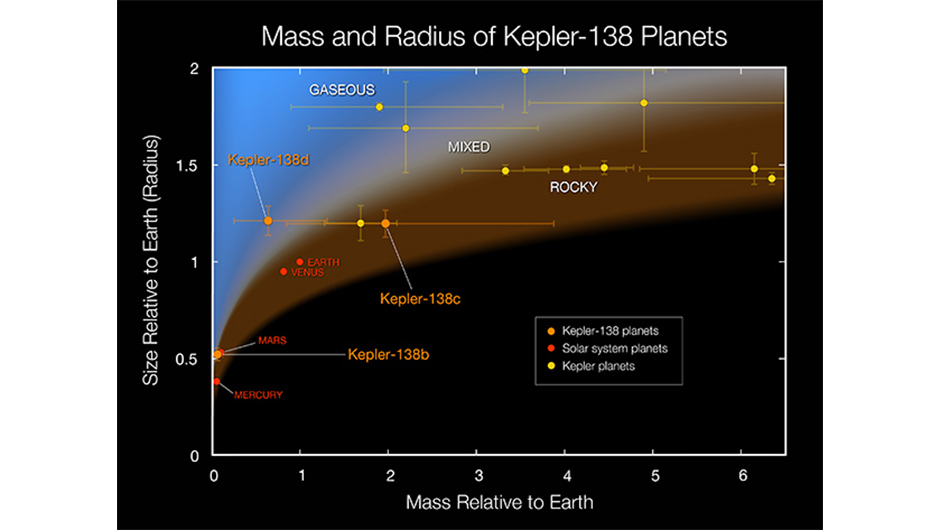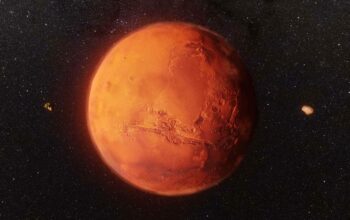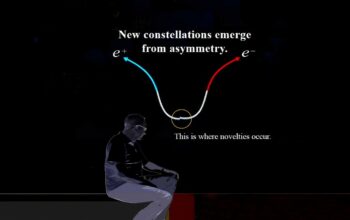The cosmos, a vast expanse of enigmatic celestial bodies, continually reveals mysteries that fuel scientific inquiry and imagination. Among these enigmas, exoplanets—planets situated outside our solar system—have garnered unprecedented attention. In recent years, advancements in observational techniques have enabled researchers to ascertain the direct mass of an exoplanet, marking a pivotal development in astrophysics. This article delineates the methodologies employed to measure exoplanetary mass, the implications of these measurements, and the transformative potential they hold for our understanding of the universe.
Measuring the mass of exoplanets is fraught with challenges, primarily due to the astronomical distances separating Earth from these distant worlds. Traditional indirect methods have thus far dominated the field, predominantly relying on the gravitational influence an exoplanet exerts on its host star. This approach, while fruitful, often yields mass estimations rather than precise measurements. The groundbreaking achievement of directly measuring an exoplanet’s mass signals a shift towards more definitive characterization of these celestial bodies.
Direct measurement methods employ innovative techniques, including the use of space-based observatories and advanced spectroscopy. One such method leverages the phenomenon of gravitational microlensing. In this scenario, the gravity of a foreground exoplanet serves as a lens to magnify the light from a background star. By meticulously analyzing the light curves produced during such events, astronomers can derive substantial data regarding the mass of the exoplanet in question.
Another promising technique is the astrometry method, which involves the precise measurement of an exoplanet’s gravitational tug on its host star. For instance, the radial velocity method measures shifts in the star’s spectral lines due to its motion induced by the orbiting planet. However, astrometric methods offer a more direct probing of the exoplanet’s influence over space and time, allowing for more comprehensive mass evaluations.
The advent of space telescopes such as the Kepler Space Telescope and the Transiting Exoplanet Survey Satellite (TESS) has accelerated the identification and assessment of exoplanetary systems. These instruments have facilitated an unprecedented influx of data, which, when coupled with advanced analytical techniques, enhances our capacity to draw nuanced conclusions regarding the characteristics of exoplanets.
The implications of directly measured exoplanetary mass are profound. Accurate mass determinations elucidate the planets’ compositions, delineating differentiated structures across various exoplanets. For example, by establishing whether a planet is terrestrial, gas giant, or something in-between, scientists can correlate mass with theoretical models of formation and evolution. Such insights are invaluable for refining our understanding of planetary formation theories, particularly those pertaining to the conditions necessary for the emergence of life.
The ability to characterize planetary atmospheres has also gained traction with these direct measurements. When coupled with atmospheric analysis techniques, such as transmission spectroscopy, precise mass measurements allow for an investigation into the atmospheres surrounding exoplanets. Understanding atmospheric composition is essential for evaluating habitability, shedding light on the likelihood of liquid water existing on a planetary surface.
The direct measurement of exoplanetary masses also offers a new dimension to the field of comparative planetology. By juxtaposing these measurements with those of planets within our own solar system, scientists can draw parallels and differentiations that inform us about varied planetary evolution scenarios throughout the galaxy. This comparative framework may reveal the common or unique characteristics shared by planets formed under different stellar environments, thus enhancing our comprehension of planetary systems as a whole.
Moreover, the capacity to accurately measure exoplanetary mass invites philosophical considerations regarding our place in the universe. As new discoveries unfold, humanity’s understanding of what constitutes life and habitability evolves. Discussions surrounding the potential for extraterrestrial life gain momentum, bolstered by tangible evidence gleaned from scientifically measured exoplanets. Each measured mass becomes not just a data point, but a narrative thread weaving into the larger tapestry of cosmic understanding.
As research progresses, the extrapolation of this knowledge will necessitate a paradigm shift in the way we approach both the search for exoplanets and the interpretation of data obtained from them. A concerted effort to integrate various fields of study—including geology, biology, and environmental science—will forge interdisciplinary pathways to probe the implications of these measurements more comprehensively. The cosmological implications of direct mass measurements also extend to the quest for understanding dark matter and energy, instilling an urgency to delineate order in the chaotic vastness of space.
In conclusion, the direct measurement of exoplanetary mass heralds a momentous evolution in our comprehension of the universe. As methodologies continue to advance, promising a future laden with new discoveries, the tenets of modern science will adapt accordingly. The cosmos continues to challenge our intellect and curiosity, and the journey ahead is replete with the potential to unveil many more secrets, enhancing both our knowledge and appreciation of the grand cosmic ballet in which we find ourselves eternally entwined.












